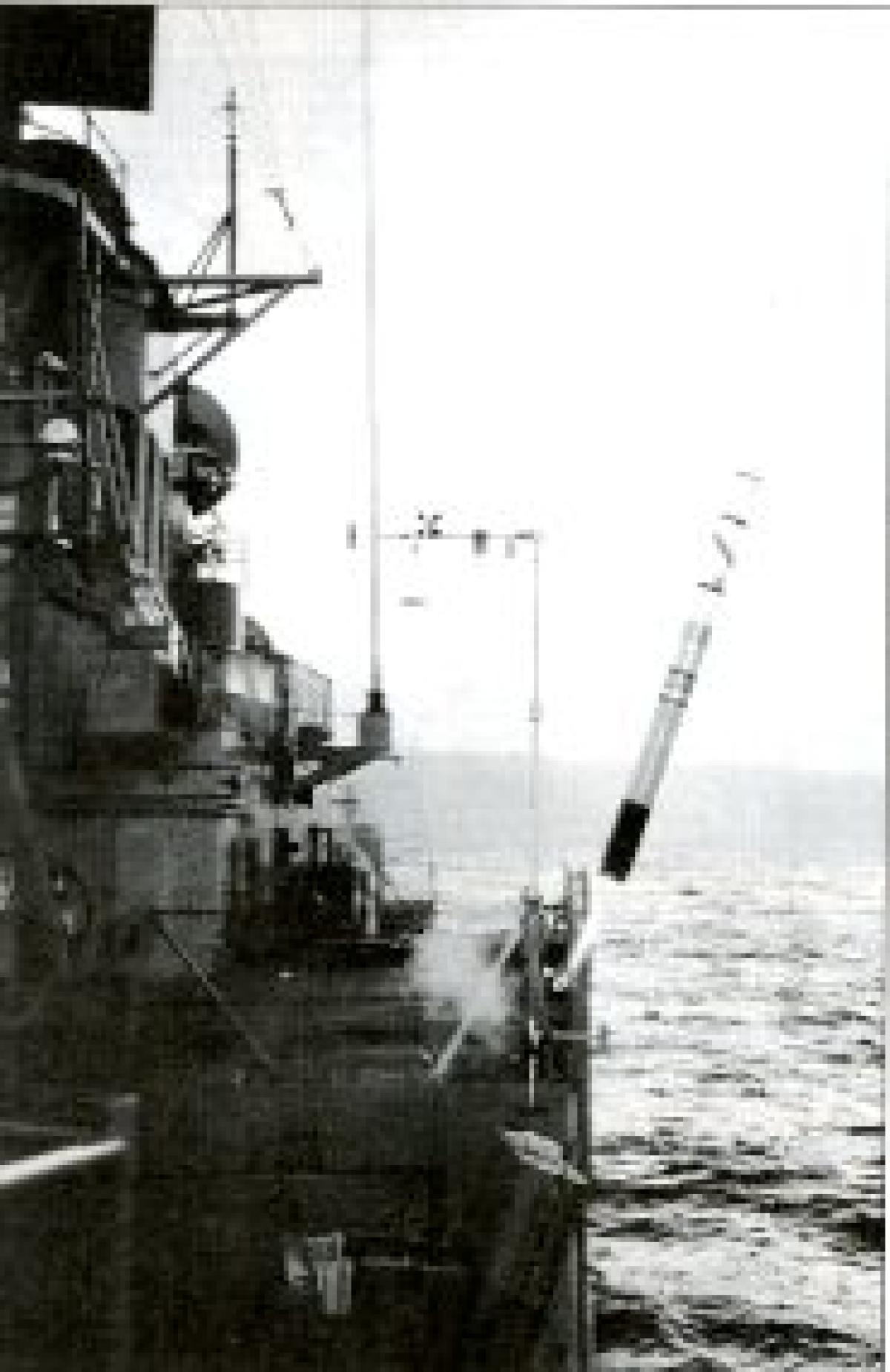The new "Naval Systems" column will appear bi-monthly, written by Ed Walsh, editor of Naval Systems Update and a former Senior Editor at Sea Power. His work on naval and military technology has appeared in numerous publications, including The Wall Street Journal. He served as a communications-electronics officer while on active duty with the U.S. Marine Corps.
Operational evaluation of the Nulka shipboard electronic decoy aboard the destroyer Stump (DD-978) is expected to be completed this fall, probably as early as October, paving the way for the start of production and deliveries of decoy rounds and launchers for front-line surface combatants. Installations on board Whidbey Island (LSD-41)-class dock landing ships should begin as early as next summer.
The Royal Australian Navy, which is teamed with the U.S. Navy on the program, expects to carry out sea trials during the same time frame, aiming at installing Nulkas on its new Anzac frigates and older Adelaide class guided-missile frigates. The Canadian Navy also has decided to purchase Nulkas.
Initially, the system is scheduled for installation on Ticonderoga (CG-47)-class cruisers, Arleigh Burke (DDG-51)-class destroyers, and the LSD-41s.
Other big-deck amphibs, such as the Wasp (LHD-1) and Tarawa (LHA-l)-class amphibious assault ships, have been given lower priority because they tend to stay farther offshore, less exposed to antiship missiles (ASMs).
The U.S. Navy has accelerated the Nulka initiative to dovetail next year with development of the advanced integrated electronic warfare system (AIEWS), which will replace the SLQ-32 starting in 2001. The U.S. Navy carried out launch tests of the Nulka from a barge in the Potomac River off the Naval Surface Warfare Center's Dahlgren, Virginia, facility in October 1996. Four instrumented Nulka decoys were launched and tracked by three optical stations. Shipboard testing followed on board the USS John Hancock (DD-981) in 1992; the Royal Australian Navy also tested the system at sea that same year on board HMAS Brisbane.
"Team Nulka" is prepared to move into production. In June, Australia awarded a collaborative round contract to British Aerospace Australia (BaeA) for 16 systems; Sippican and Atlantic Research, respectively, are under contract to BaeA for the payload and rocket motor. Following Operational Evaluation, the U.S. Navy plans a Milestone 3 decision to proceed with production, and is expected to award a contract to Sippican for the launcher subsystem.
The Nulka decoy consists of an autonomously guided hovering rocket that emits a ship-like radio-frequency signal intended to confuse the guidance systems of approaching ASMs. Under the joint Australia-United States initiative, Australia is to produce the Nulka's spin-control unit, which orients the decoy in the direction of the approaching ASM, and the flight-control unit, which maintains decoy attitude and speed. The United States is responsible for the payload, which emits the radio-frequency signal; both countries will build propulsion units.
The U.S. Navy established a requirement for a system capable of decoying incoming antiship missiles away from surface ships in the early 1980s. At about the same time, Australia's Defence Science and Technology Organization initiated development of the Nulka system, and the United States and Australia signed a memorandum of agreement for development of an active missile decoy in 1986. In January 1988, the Australian government awarded a contract, jointly funded by Australia and the United States, to Australia's AWA Defence. British Aerospace purchased AWA Defence in June 1996 and consolidated it with British Aerospace Australia.
The primary elements of the fullup Nulka are the Mk 234 electronic decoy target, which will be launched by a new Mk 53 launching system. The Mk 53 will represent a modified Mk 36 chaff launcher fitted with two tubes for the Nulka decoys and six chaff dispensers. A Mk 24 launch processor computes launch solutions both for the Nulkas and the chaff dispensers, and provides the interface with the ship's combat system. Two Mk 53 systems will be installed on the port and two on the starboard side of vessels.
The system is cued either by the SLQ-32 electronic warfare system or directly by the ship's combat system. The Nulka processor, which is programmed with a library of known threats and tactical responses, controls the flight of the hovering rocket to a designated point, at which point the decoy begins emitting. The decoy is controlled by a three-vane thrust-control unit, which maintains the decoy at the programmed altitude, heading, and speed.
Navy and British Aerospace officials emphasize that one of the Nulka's critical tactical nuances is its ability to divert incoming ASMs effectively not only from their primary target but also from other ships nearby. Mike Hedrick, manager of the program for British Aerospace, points out that in the case of several ships moving together, it's not enough simply to divert the missile from its intended target-if not confused sufficiently, it may quickly find another.



